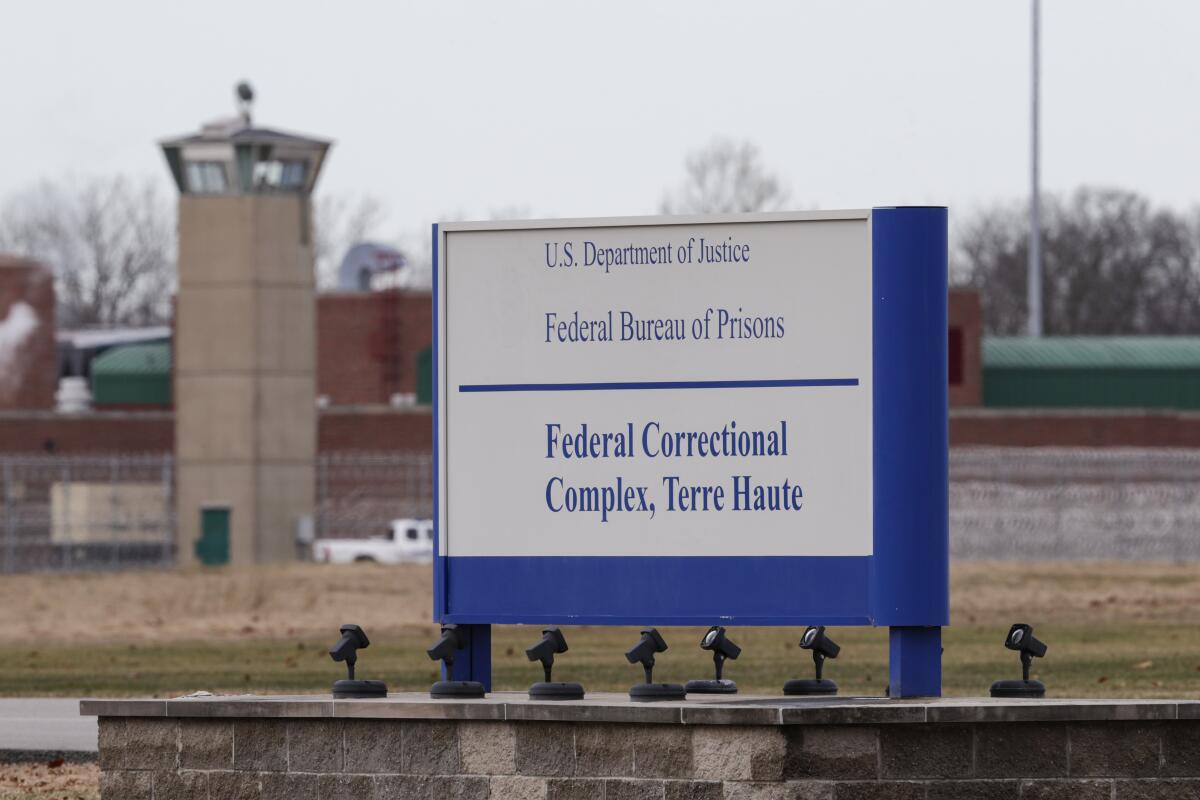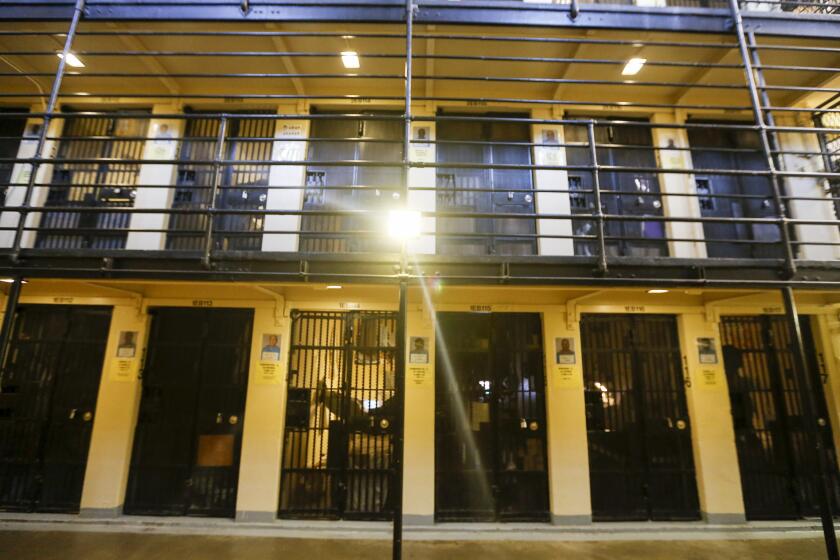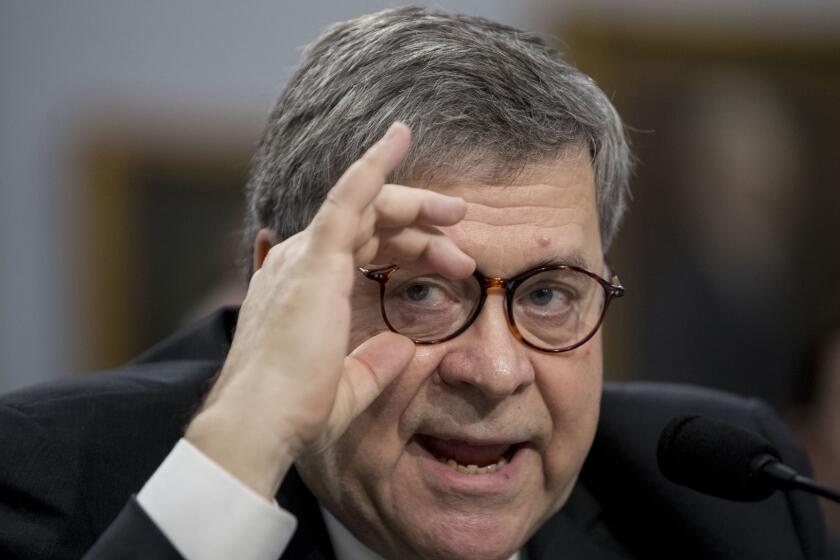Editorial: The execution of Daniel Lewis Lee was about politics, not justice

- Share via
There was no good reason for the federal government to rush the execution Tuesday morning of Daniel Lewis Lee. No good reason, that is, other than politics.
Lee was the first of five condemned prisoners Atty. Gen. William Barr named in a July 2019 order resuming federal executions after 17 years (some states have been executing prisoners all along). Barr also ordered the government to abandon the three-drug combination — one to render the condemned insensate, the second to paralyze and the third to stop the heart — in favor of a single overdose of the sedative pentobarbital.
Prop. 66’s failure to speed up California executions is more proof that we must end the barbaric practice. It is immoral, and it just doesn’t work.
The executions have been stalled by a variety of legal challenges. Early Tuesday morning, however, the Supreme Court issued a 5-4 ruling lifting an injunction in a case that challenged the constitutionality of using pentobarbital, and Lee was dead by breakfast time even though his legal appeals had not been exhausted.
“It is beyond shameful that the government, in the end, carried out this execution in haste, in the middle of the night, while the country was sleeping,” Ruth E. Friedman, Lee’s lawyer and director of the Federal Capital Habeas Project, said Tuesday morning. “We hope that upon awakening, the country will be as outraged as we are.”
We hope so too. It’s appalling that the government moved so quickly to execute Lee as a political gambit. The victims of Lee and the others scheduled to die included children, a point Barr made clear when he announced that the government would restart the machinery of death. That’s a dismayingly cynical play, using the memories of murdered children to grease the skids for state killings.
In its unsigned majority opinion, the court said the condemned men had not established that they would likely win their appeal over the constitutionality of the use of pentobarbital, even though Justice Stephen Breyer expressed doubts about the execution method in his dissent. Justice Sonia Sotomayor in a separate dissent condemned the court’s failure to conduct a “meaningful judicial review of the grave, fact-heavy challenges respondents bring to the way in which the Government plans to execute them.”
After 17 years, the federal government intends to resume executions under a system that’s just as flawed and inhumane as the surviving state systems.
This execution has taken place because the Trump administration is driven to display its law-and-order toughness (except, of course, when it comes to President Trump’s cronies) as it confronts significant reelection headwinds. But that move also spotlights some of the reasons the death penalty should be done away with.
When the attorney general gets to pick names for a death list, determining who gets executed is arbitrary. And Lee was one of two men convicted of those three murders; the other man, and by most accounts the one driving the crimes, received a life sentence. One set of crimes, two convicted murders, two different sentences, and the one with the death verdict gets to the front of the line because of the whims of the attorney general. None of this is justice.
More to Read
A cure for the common opinion
Get thought-provoking perspectives with our weekly newsletter.
You may occasionally receive promotional content from the Los Angeles Times.












